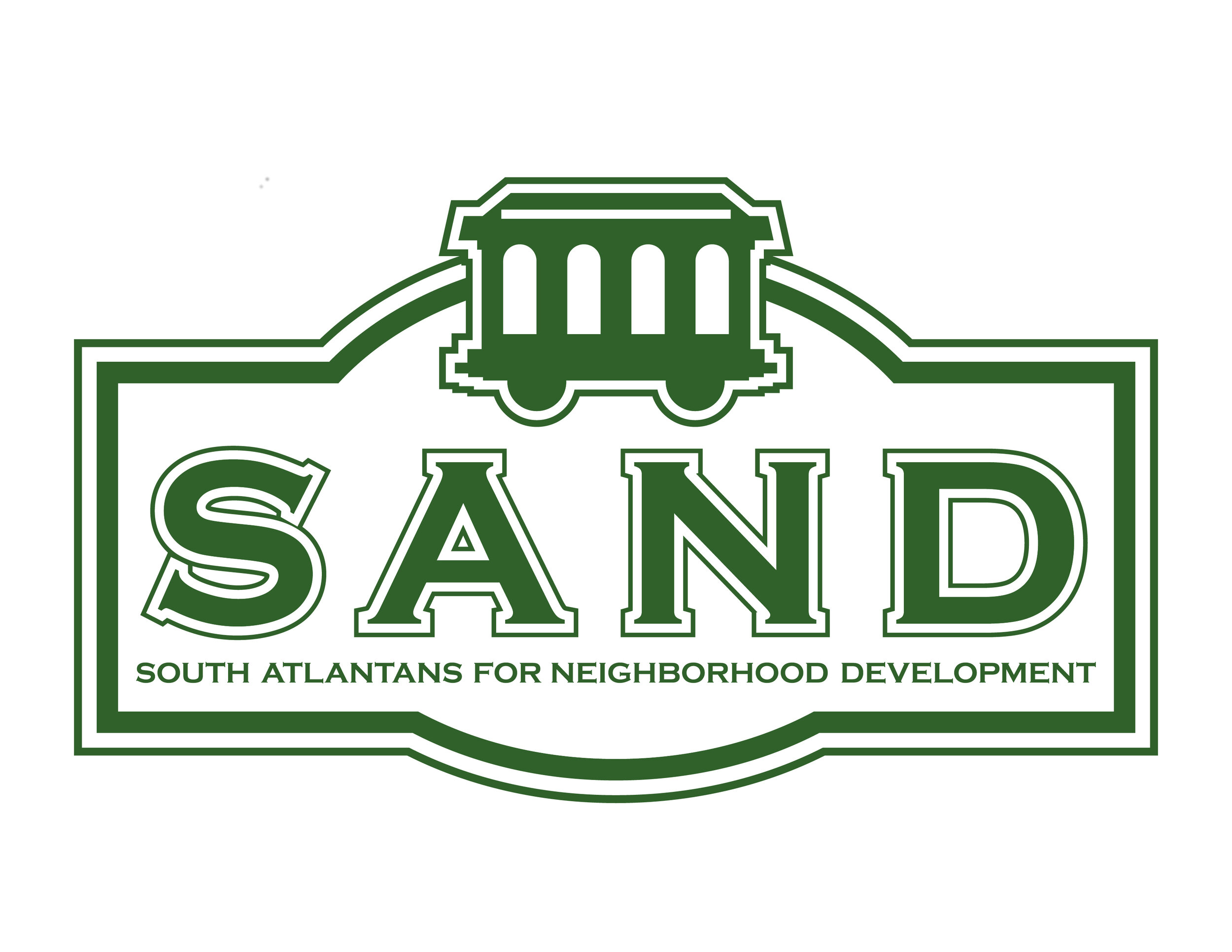A Brief History of the area
Creek Indian Nation
The area that makes up the neighborhoods of SAND was the territory of the Creek Indian Nation until approximately 1825 when the Treaty of Indian Springs, signed under Governor George Troup, began the forced removal of the Creek. By 1827, they were all gone and any white settler could enter a land lottery. 160 or 200 acre parcels were awarded at a cost of four dollars. The majority of the land was used as working farms until the the late 1800s.
Post Civil War
In 1892, some of the farms began to be subdivided into building lots of approximately 2 acres in size and a Civil War soldiers home was constructed on what is now the area occupied by the complex of State buildings on United Avenue. In 1898, construction began on the United States Penitentiary, located at the south west corner of SAND, on McDonough Blvd at Boulevard. The penitentiary consists of 328 acres of land, and is one of the oldest facilities in the Penitentiary system at more than 102 years old.
Trolley line expansion
In the early 1900s, Aquilla J. Orme, an Atlanta Electric Light Trolley Company official, approved a plan to extend the trolley line from downtown Atlanta to the Old Soldiers Home on United Avenue. Increased access to these areas by city workers resulted in a large phase of home building in the Victorian architecture style. This is the reason why SAND adopted the Trolley Car as its official symbol. Many members of SAND display their neighborhood support by purchasing and displaying wooden trolley cars on the outside of their house.
Evidence of the trolley path can be traced through the neighborhood by examining the odd wall angles of buildings at the north east corner of Woodland Avenue and Delaware Avenue. At one time The trolley ran between these buildings, out to Moreland Avenue at the intersection of Ormewood and Moreland Avenue.
Post World War I
Following the first World War, there was a construction boom during which the area's Craftsman, shotgun and small brick bungalows were constructed. This included many Sears kit homes that survive to this day. In 1922, the City of Atlanta annexed land for the construction of the Anne E. West Elementary School, which became the heart of Ormewood Park.
Post World War II
The wood sided cottages that are scattered between the older Victorian and Craftsman homes were built in the period of growth following the end of World War II. This was followed in the late 1950s and early 1960s with a number of brick ranch style homes.
1970's
In the early 1970s, the City of Atlanta assigned names to neighborhoods that we now live in: Benteen Park, Boulevard Heights, McDonough-Guice, North Ormewood Park, Ormewood Park, Woodland Hills. These neighborhoods were established to help facilitate communication between City of Atlanta and residents through the Neighborhood Planning Units.
New home building was virtually nonexistent throughout the 1970's and 1980's as many businesses and residents relocated to the rapidly developing suburbs in the areas north of I285. During this period, many residents began self organizing into neighborhood associations in order to protect the historic neighborhoods they loved and lived in. South Atlantans for Neighborhood Development was incorporated in 1979.
Renewal & Redevelopment
The neighborhoods of SAND began to see a renewed interest beginning In the late 1990's. Taking advantage of low housing prices in the area and relaxed lending practices, a new generation of homeowners began flowing into the area in the early 2000's. This period also included the addition of the seventh neighborhood to SAND. Glenwood Park is a shining example of "new urbanism" that was developed on an 80 acres former industrial lot by Charles Brewer, founder and CEO of Mindspring. Its development was based on a commitment to traditional neighborhood design, walkability, mixed us and environmental management practices.
In the years following the 2007 housing crash, the neighborhoods of SAND have seen a great deal of interest in the redevelopment of areas for both housing and retail. In particular, the areas adjacent the the former CSX rail line that will become the Southeast section of the Beltline. In 2013, Fuqua Development purchased the 20 acres industrial lot owned by LaFarge Building Materials in what is technically considered Grant Park. The currently submitted plans for "Glenwood Place" include a 118,000 square foot Super Kroger, and a Chick-Fil-A drive thru to be followed by a 165 unit apartment complex in a second phase.
It is a very exciting time to be a resident living in one of the neighborhoods of SAND!
